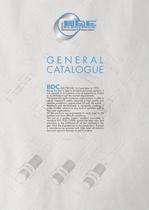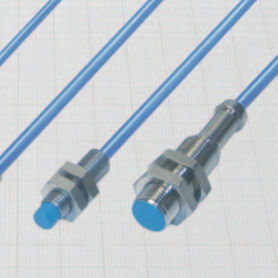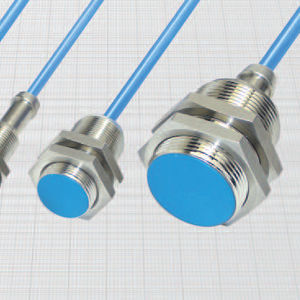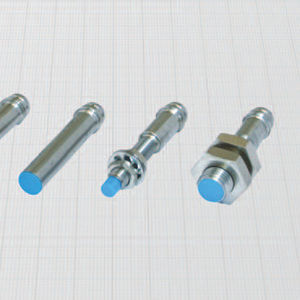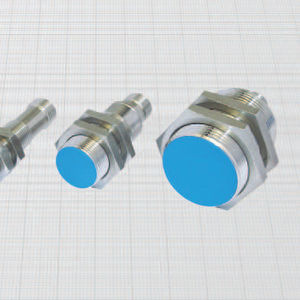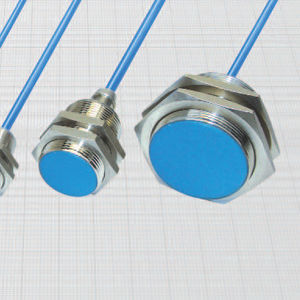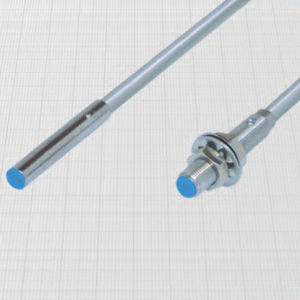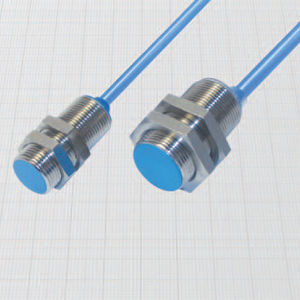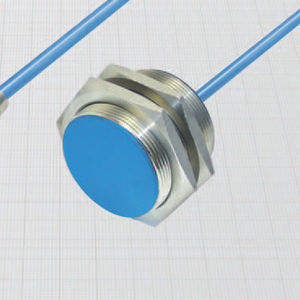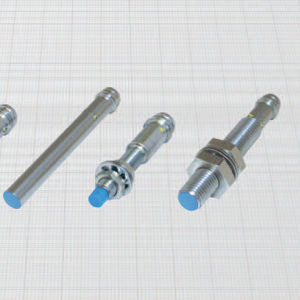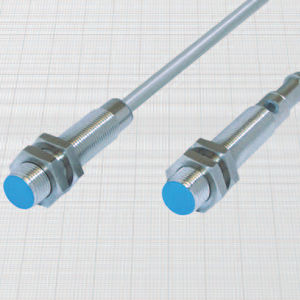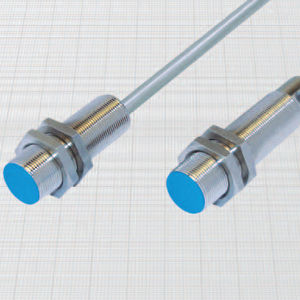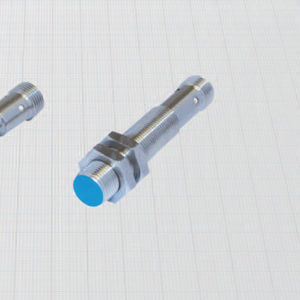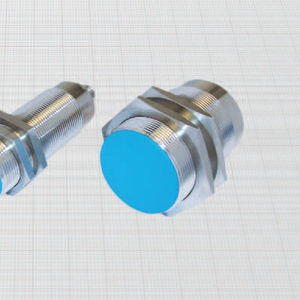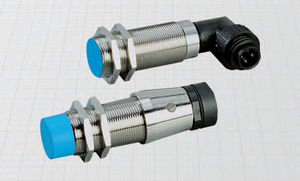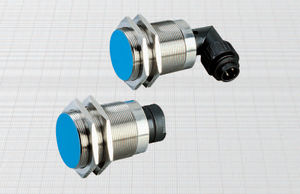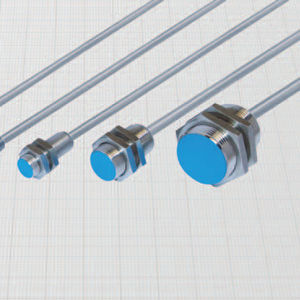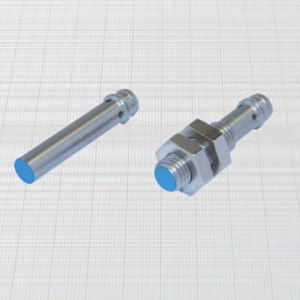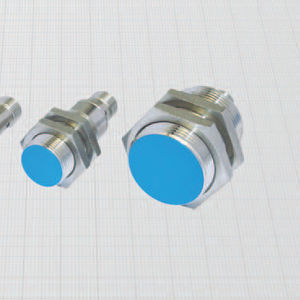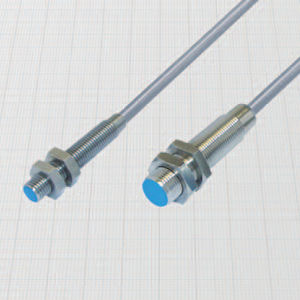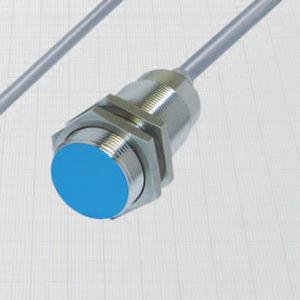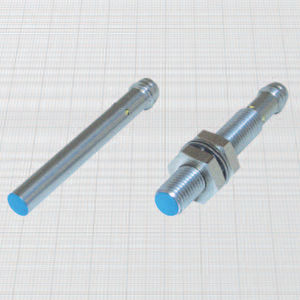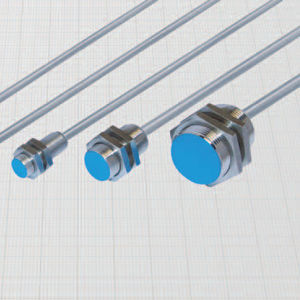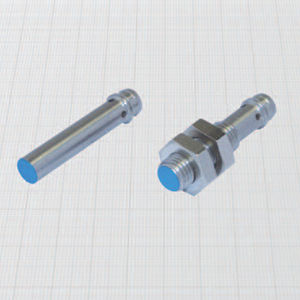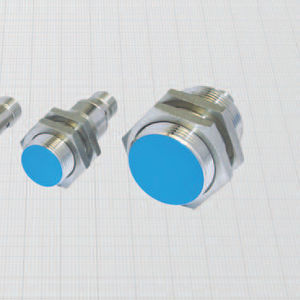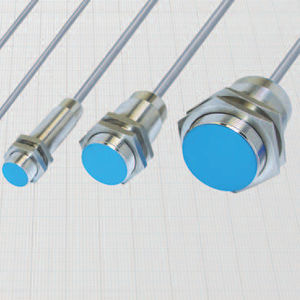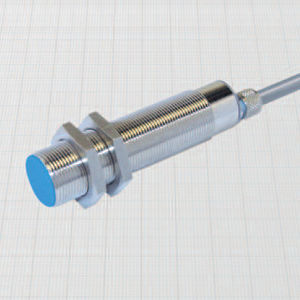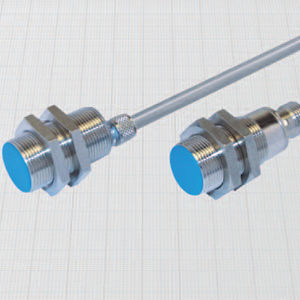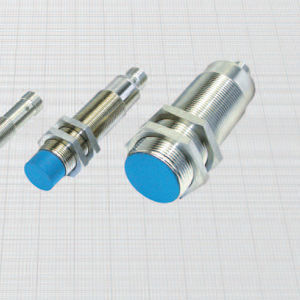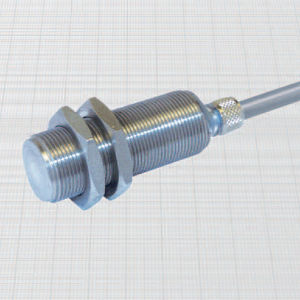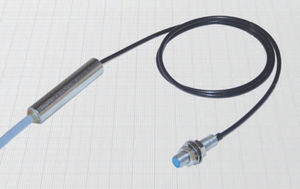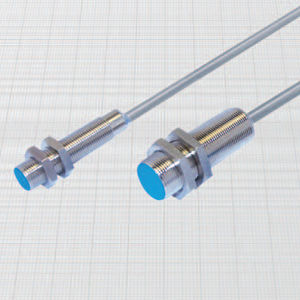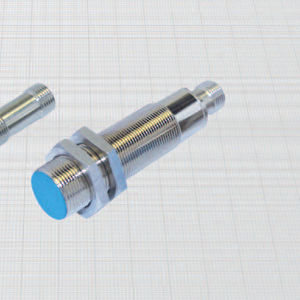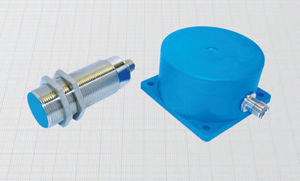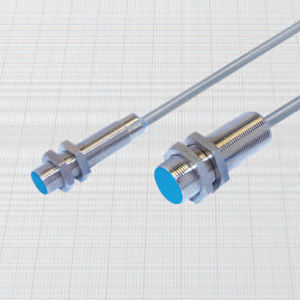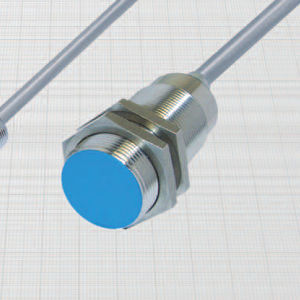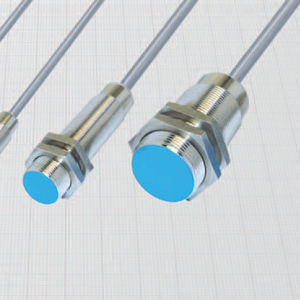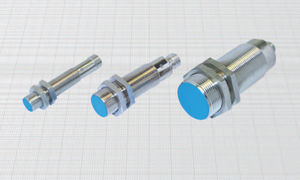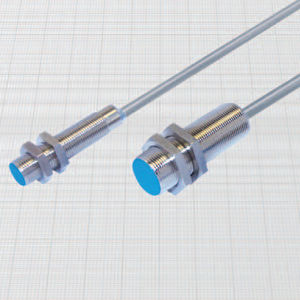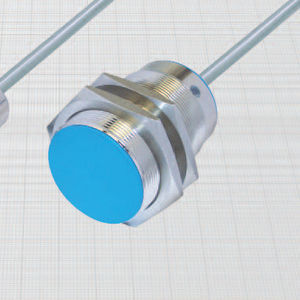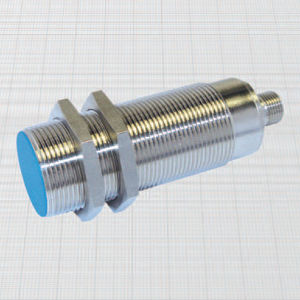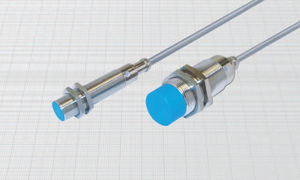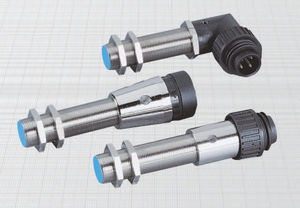
Inductive proximity sensor DCAL30/4609 cylindricalM30threaded
Add to favorites
Compare this product
Characteristics
- Technology
- inductive
- Shape
- cylindrical
- Diameter
- M30
- Mounting
- threaded
- Material
- plastic, brass
- Protection level
- IP67
- Length
60 mm
(2.36 in)- Measuring range
Min.: 4 mm
(0.16 in)Max.: 60 mm
(2.36 in)- Process temperature
Min.: -10 °C
(14 °F)Max.: 70 °C
(158 °F)
Description
• Diameters 30 - 80 mm
• Analog with linear current output
• Cable output
General Features:
These inductive proximity sensors provide an output current directly or reversely
proportional to the distance between the sensing face and the metal target. The
output current is also dependent by the material of the target, so they can be
used not only to detect distances, displacements, vibrations and wavings but
also to recognize the composition of metals and alloys. In the two wires configuration, they are reversal polarity and short circuit protected devices compliant to
the 4-20 mA industrial standard.
Use of the sensor:
The output current flows through the external load RL generating a voltage (Vo) used
to drive the input stage of the measuring instrument. The correct value of RL can be
chosed accordingly to the values of power supply Vdc and the wanted Vout range
as reported on the tables.
Technical data:
• Supply voltage: 10 ÷ 40 Vdc
• Max ripple: 20%
• Output current range: 0 ÷ 16 mA or 4 ÷ 20 mA
• Temperature range: - 10° ÷ + 70°C
• Max thermal drift: < 10%
• Degree of protection: IP67
• Electromagnetic compatibility (EMC) according to EN61000-6-2/-4
• Shock and vibration resistance according to EN60068-2-27 EN60068-2-6
Materials:
• Cable: 2 m PVC CEI 20 - 22 II; 90°C; 300 V; O.R.
shielded
• Housing 30 mm: nickel plated brass
• Housing 80 mm: plastic
• Sensing face: plastic
Catalogs
General Catalogue
213 Pages
INDUCTIVE SENSORS
92 Pages
Other BDC ELECTRONIC S.r.l. products
CYLINDRICAL INDUCTIVE SENSORS IN METAL HOUSING
Related Searches
- Proximity switch
- Cylindrical proximity switch
- Inductive proximity switch
- Tilt sensor
- IP67 proximity switch
- DC proximity switch
- Dual-axis inclinometer
- Threaded proximity switch
- Magnetic proximity switch
- Plastic proximity switch
- Stainless steel proximity switch
- Multi-axis inclination sensor
- Rectangular proximity switch
- Analog tilt sensor
- PNP proximity switch
- M12 proximity switch
- Rotational speed sensor
- Magnetic speed sensor
- Brass proximity switch
- Flush proximity sensor
*Prices are pre-tax. They exclude delivery charges and customs duties and do not include additional charges for installation or activation options. Prices are indicative only and may vary by country, with changes to the cost of raw materials and exchange rates.


